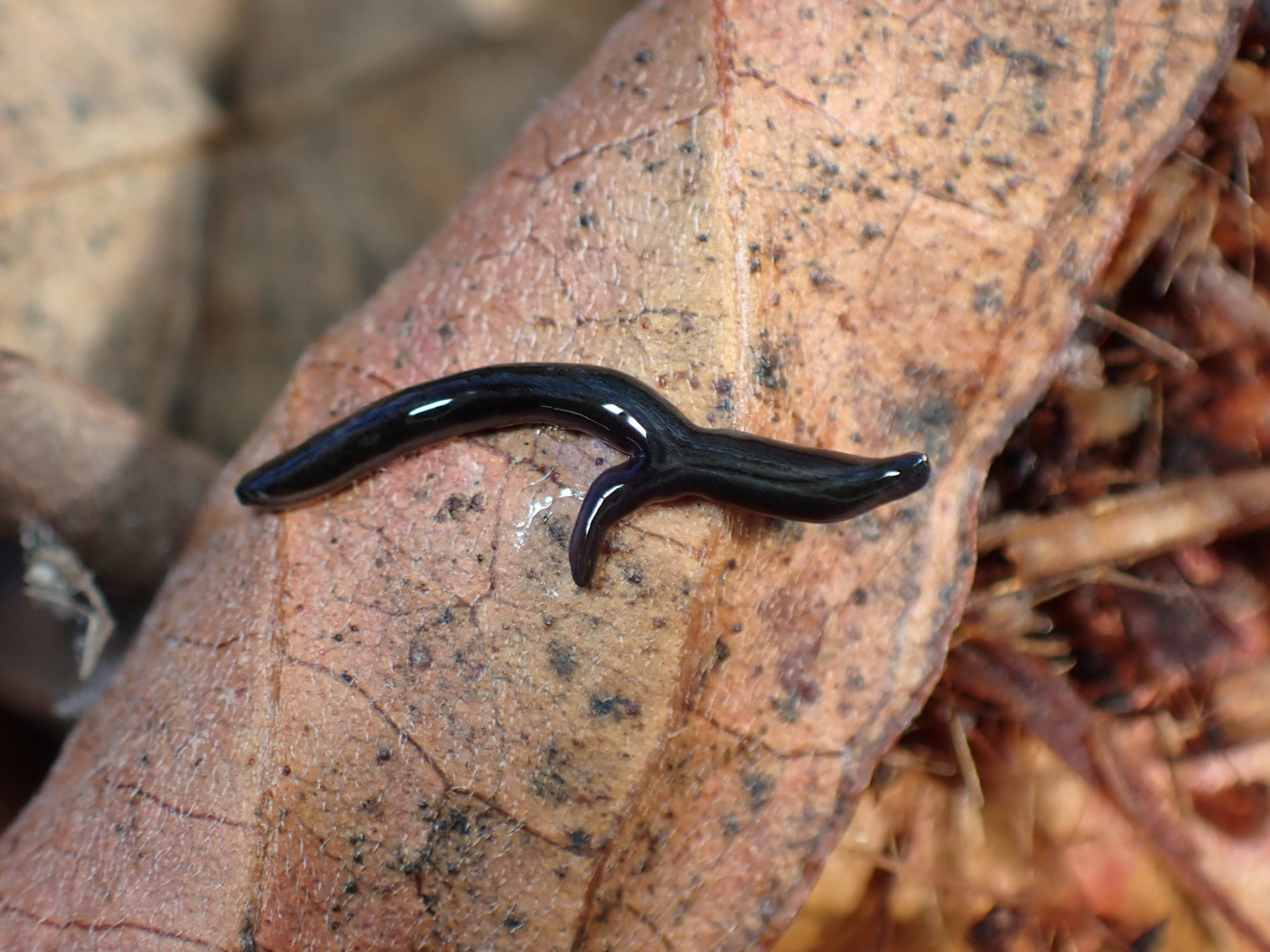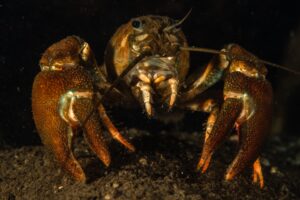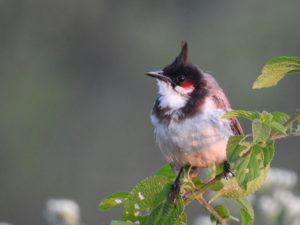There are creatures in the Bay Area that can have two heads. Or no heads. Or a head some of the time, until they rip themselves in half to reproduce, then grow a new one.
On the surface, it would seem that this fascinating group of non-native creatures is begging for a sensationalist headline, possibly with a liberal dose of words like “invasion” and “alien” and fashionable social media fear-mongering. But is this really justified?
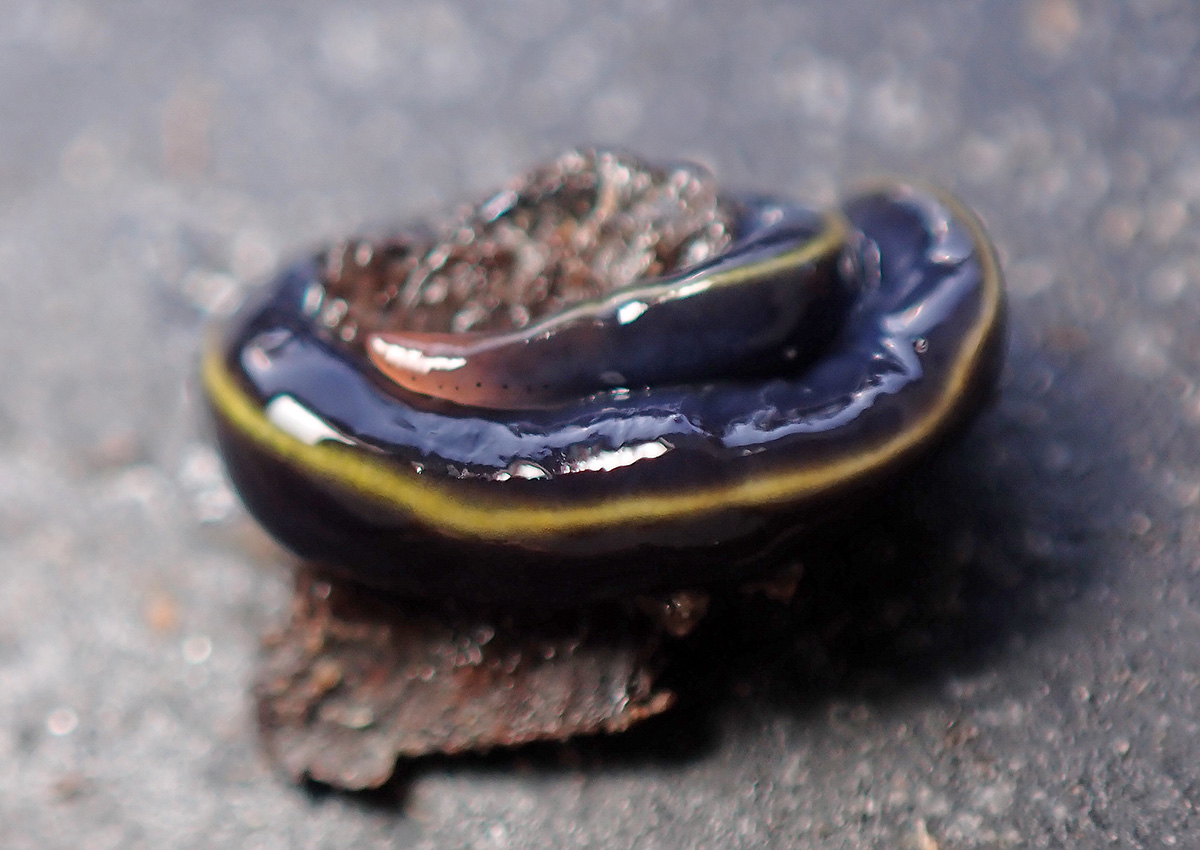
Fantastic Beasts…
Lift up a large-ish garden pot that’s been sitting on soil in the Bay Area, and there’s a good chance you might find a whole United Nations of non-native invertebrates under there. None are more surprising to an unsuspecting gardener than the land planarians (Geoplanidae), a family of predatory flatworms.
With attention-getting colors and flashy patterns of stripes and spots, it’s immediately clear that these non-native land planarians are no common earthworms. The blue garden flatworm (Caenoplana coerulea), a native of Australia, is bright cerulean blue with a yellow racing stripe and a red head studded with eyespots (ocelli); the snake-headed flatworm (Rhynchodemus sylvaticus), a European species, looks like a miniature snake with a pointed snout and only two prominent ocelli; and several species — the shovel-headed garden worm, Bipalium kewense, native to Southeast Asia; the wandering broadhead planarian Bipalium adventitium, native to Asia, and the multi-lined hammerhead worm, Diversibipalium multilineatum, native to Japan — sport high-contrast stripes and wide, shovel-shaped heads reminiscent of hammerhead sharks. Yet another land planarian, Microplana scharffi, a native of Europe, looks like a length of pink intestine with a tiny gray head.
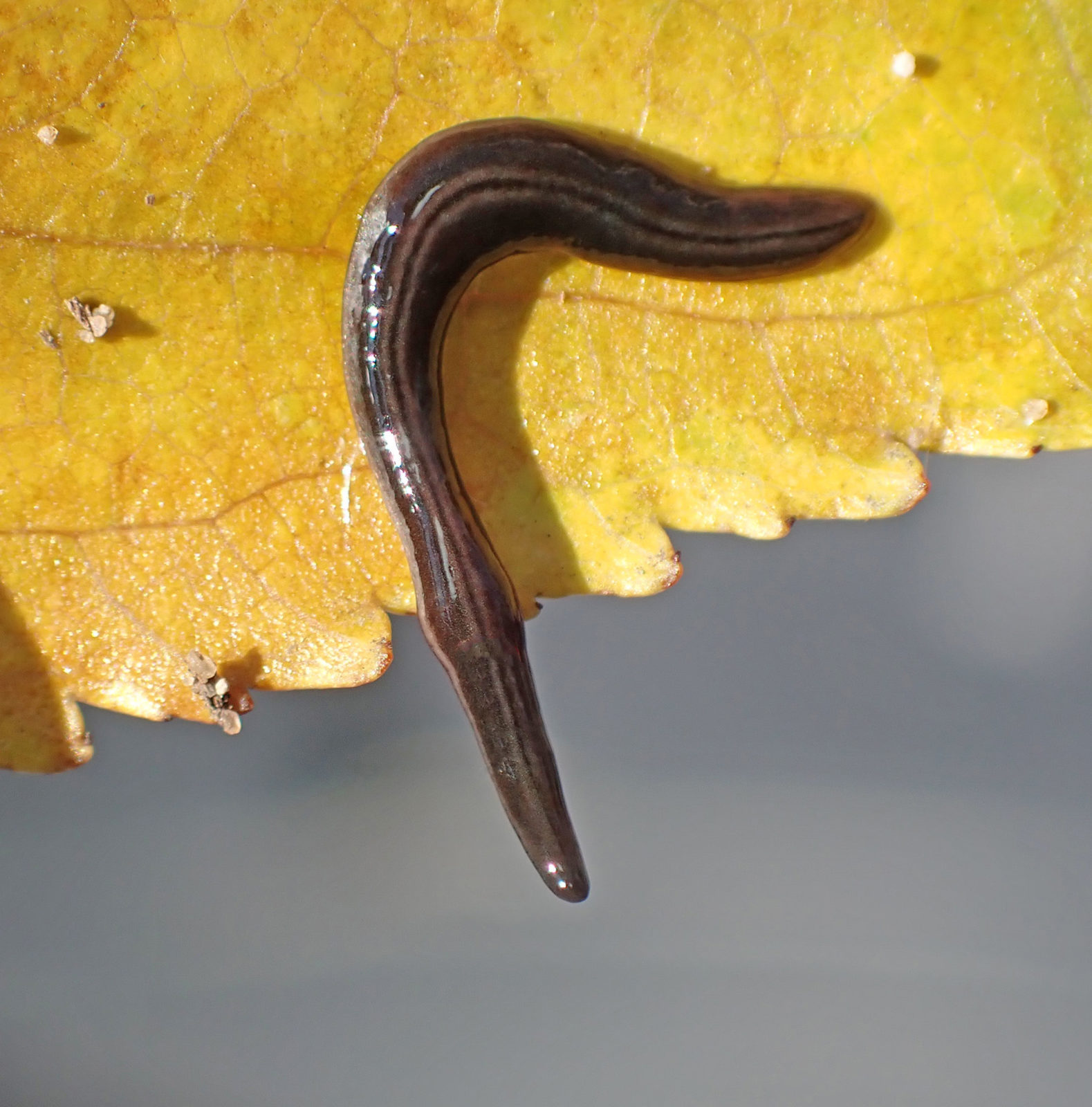
They all hunt, attack and digest their invertebrate prey using an array of chemicals in their copious mucus. That mucus also keeps them moist, since they do not have a tough outer skin to protect them from drying out. They find and track down their prey mainly using chemical cues, since their tiny eyespots may not do much more than register light and darkness. Planarians don’t have a mouth in their head area – their pharynx, usually located halfway down the length of their body, serves as both mouth and anus.
Students study flatworms as one of the simplest animal groups, and for their incredible ability to regenerate. I saw this firsthand at a Bay Area nursery last year, where out of the leaf litter appeared a sleek, black Kontika ventrolineata with two fully functioning heads, each with differing ideas on where the Y-shaped planarian should go next. Yes, there is a video.
So far, at least a dozen species of non-native land planarians from around the world have been identified in the Bay Area. The Bay Area is home to native freshwater planarians — of high school biology fame and beyond — but no native land planarians.
Land planarian researcher Leigh Winsor, an adjunct senior research fellow of zoology and ecology at the College of Science and Engineering at James Cook University in Australia, conveniently divides non-native species of land planarians into those that just visit and those that cause problems.
“Tourist flatworm species have generally been around for a long period in their adopted country, are almost always restricted to urban and public gardens and hothouses, and generally attract little attention – gardeners notice them, but they are not associated with any decline in soil fauna that casual gardeners notice,” he wrote in an email. “They appear to reproduce relatively slowly, often by fission in which a hind portion is shed, and over some weeks regenerates into a whole flatworm; they are generally not present in overwhelming numbers.”
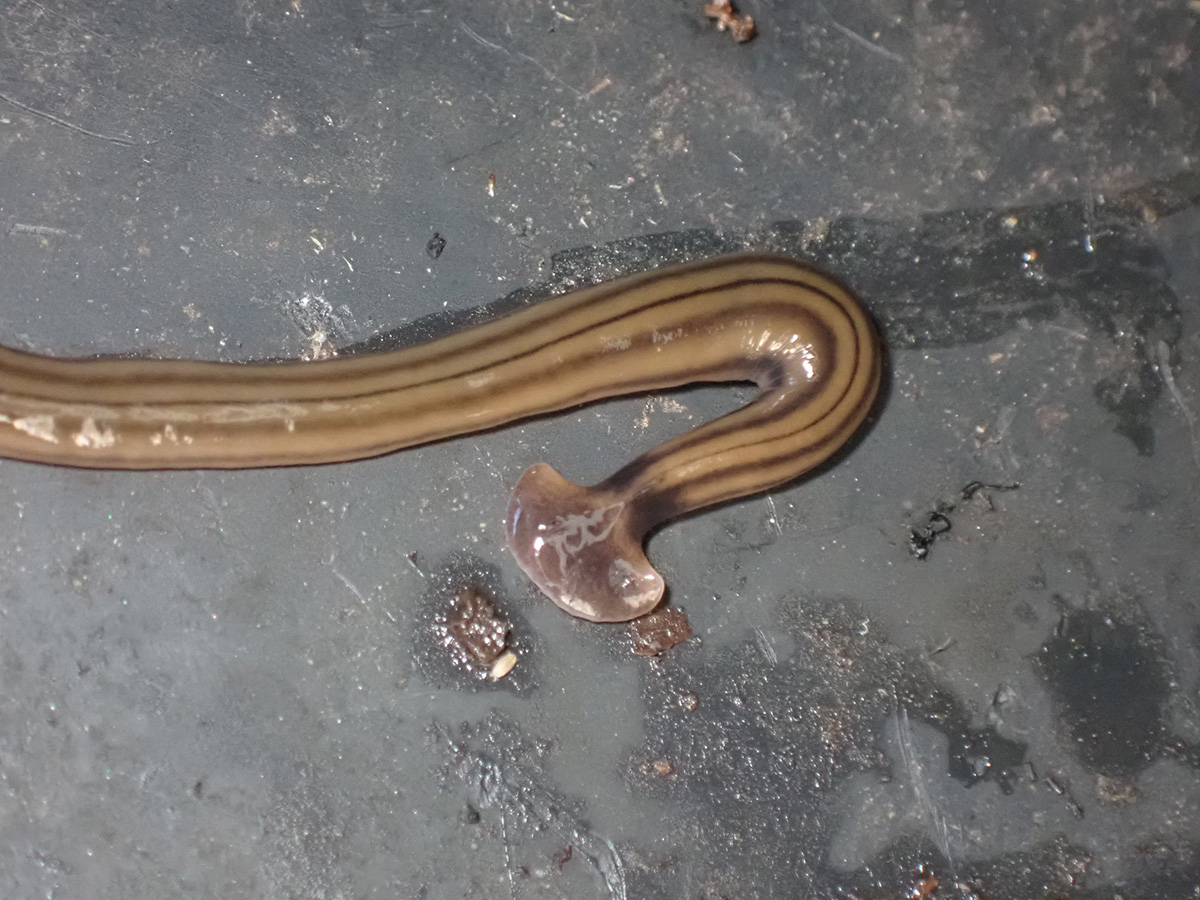
However, he continued, there are also troublemakers that “burst upon the scene. Absent one day, and then are suddenly there in numbers soon after. They may be found in urban and public gardens, but after a while start popping up in rural areas, nature parks and so on. They are generally associated with a decline in certain prey groups such as snails, and species of soil fauna. They generally reproduce rapidly, often sexually, producing a cocoon with numerous young, and thus can build numbers rapidly.”
Winsor says that of the land planarian species documented in California on iNaturalist, only two are known to cause trouble: Platydemus manokwari, a native of New Guinea, and Obama nungara, a native of Argentina. “P. manokwari is responsible for the decline in many native species, especially endangered species, in Pacific countries,” he wrote. “O. nungara is considered a potential threat to soil fauna in Europe because of its abundance and predatory nature.”
(It’s worth noting that Obama nungara is not named for the 44th president of the United States; the word “Obama” comes from a combination of the words for “leaf” and “animal” in the Tupi language where this leaf-shaped flatworm was described.)
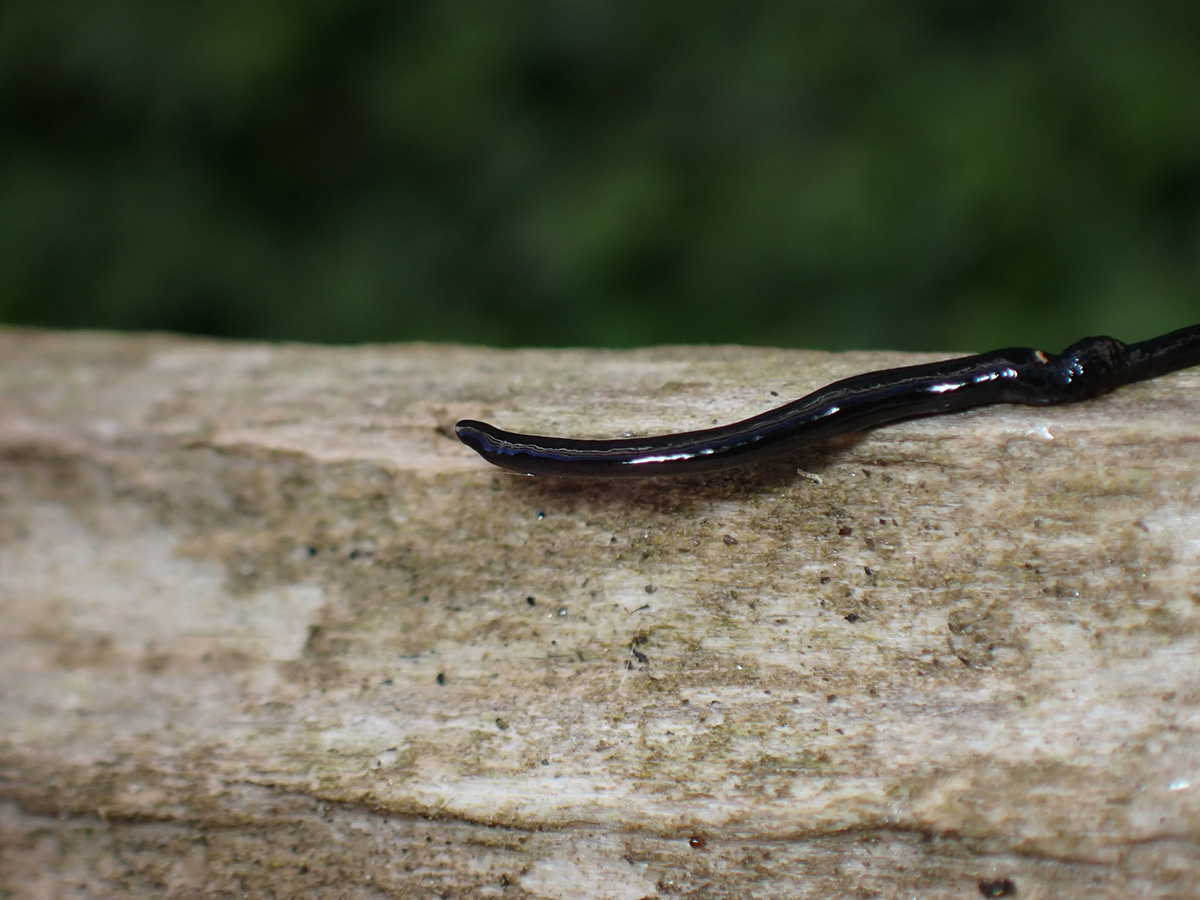
…And Where to Find Them
Back to that garden pot. Land planarians are found throughout the urban Bay Area, mingling with a few native California invertebrates and enjoying any shaded, damp shelter thoughtfully provided by the primates that brought them to California in the first place.
There is general agreement in the scientific and regulatory communities that land planarians arrived in California in soil, probably through the commercial nursery trade. “The nursery trade is pretty high risk,” said Kyle Beucke, the primary state entomologist for the California Department of Food and Agriculture. “It’s generally thought of in the context of living plants, but there is also risk in imported soil, pots, packing, pallets, and stone, tile and other construction materials. Nurseries are a nice outdoor situation for land planarians.”
Nurseries may inadvertently facilitate land planarian reproduction, too, since plant pots are moved frequently and may fragment the land planarians living underneath them, causing them to reproduce asexually more often than they otherwise would.
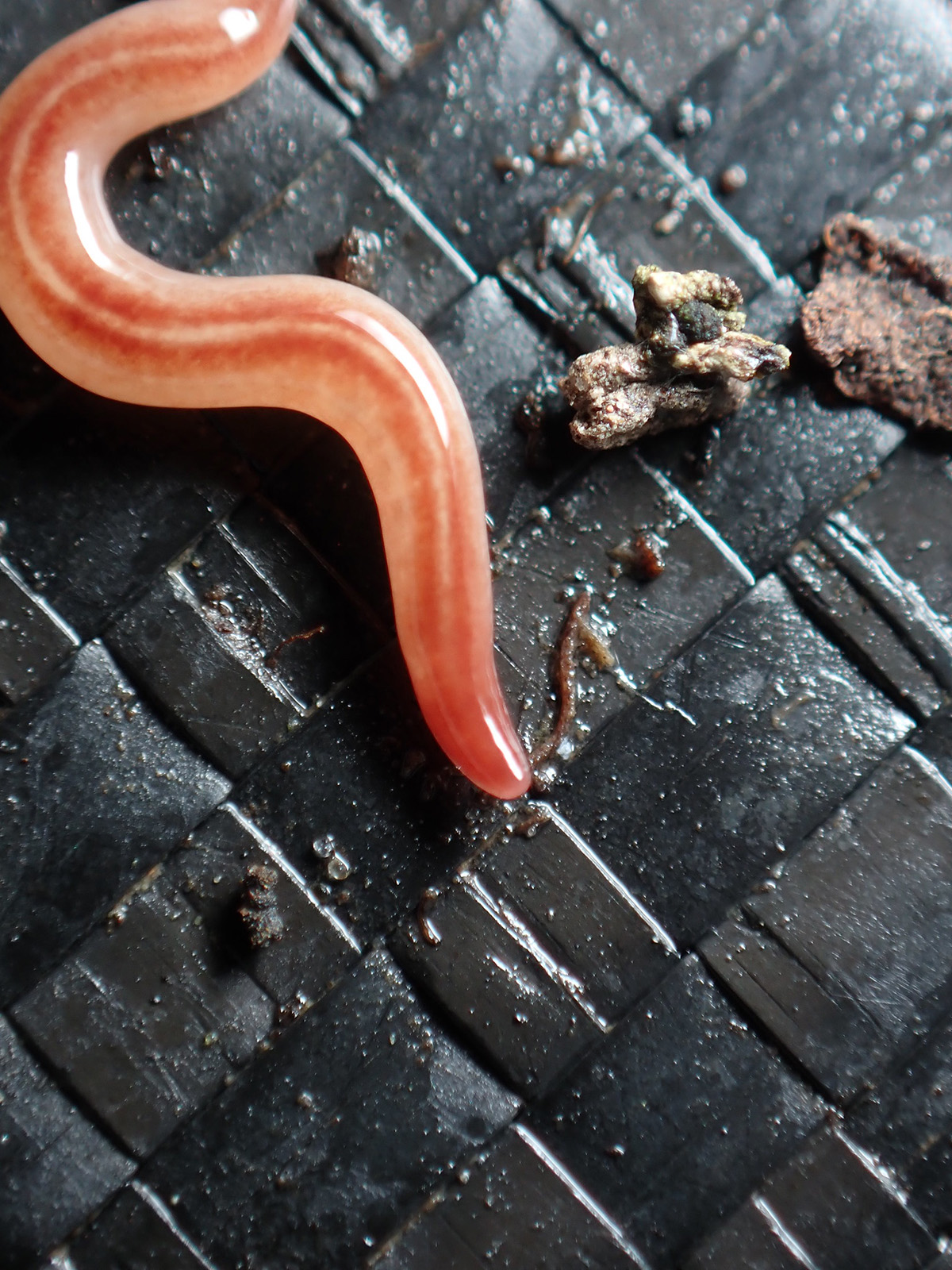
Cut to the Chase: Should I Kill Them?
Land planarians are not on any urgent regulatory radars in California. They are not deemed to be direct pests of agriculture, since they do not eat plants, but some species have shown that they have the capability to impact soil ecology in other parts of the world. “The first thing gardeners should determine is what species of flatworms, if any, they have in their garden,” Winsor said. “Tourist species do not appear to have large impacts on the soil fauna.”
Elizabeth Brusati, a senior environmental scientist for the California Department of Fish and Wildlife’s Invasive Species Program, agrees: “Not all non-natives are ‘bad.’ For us to label a species ‘invasive,’ it has to have a negative impact, such as on the environment, the economy, or human health. Certainly, land planarians are here in California and hard to get rid of, but at least so far, we have not seen a negative impact. Due to capacity issues, non-native invertebrates don’t get as much attention as they should.”
“Flatworms may not seem particularly worrisome or threatening, but they are voracious top-level predators of soil organisms, and their presence can change nutrient cycling, endanger native species, and alter an ecosystem’s plant community,” wrote planarian researcher Ronald Sluys in a 2016 issue of American Scientist. “The current worldwide occurrence of these terrestrial worms is a testament to their remarkable evolutionary success in occupying a new niche on land.”

This is where it starts to get murky for binary-thinking humans, since we don’t all agree on what constitutes “good” and “bad” in all instances. For example, land planarians eat non-native European earthworms, which are deemed “good” by traditional agriculture and gardeners but “bad” for the soils of California native gardens and wild areas.
Similarly, land planarians may help control populations of invasive, vegetable-eating snails and slugs, but they may also eat rare California native snails and slugs, many of which are threatened or endangered and present no threat to agriculture. According to Winsor, conservationists should be concerned “only where there is evidence of the flatworms spreading beyond urbanized areas.”
Each year in June, the CDFW hosts California Invasive Species Action Week, a series of events designed to increase public awareness of invasive species issues and promote public participation in invasive species control. This year, their schedule will include a virtual bioblitz organized by the Bioblitz Club to help document the presence of land planarians and other invasive invertebrates under garden pots in both residential and public settings.
Even if you have decided to attempt to identify and remove the most invasive land planarians from your area, it isn’t easy. Chopping them up — with a trowel or somesuch — may only accelerate their reproduction. Ashley Morgan-Olvera of the Texas Invasive Species Institute suggests placing captured flatworms in an airtight bag with salt, then sticking it in the freezer, but that’s hardly practical on a garden-wide scale.
For the most invasive of the flatworm species, nursery-level legislative controls and phytosanitary practices may be the most practicable solution, according to Winsor. “If an invasive species is found, detention notices should be enforced to prevent further stock movement,” he said. “Plants from the same consignment should be traced and thoroughly examined for flatworms. Good biosecurity practices should be in place. Machinery and equipment should be hosed down with water to remove soil before moving between sites. Gardeners and others should not move soil, compost, or plants from infested sites.”
“Eradication is only likely to be feasible in very small, controlled areas before the species has entered the wild,” said Winsor. “If on concrete, biocides could be used, but on a soil-base, removal and scorching would be necessary. There are no chemical or classical biological control methods currently available for invasive flatworms.”
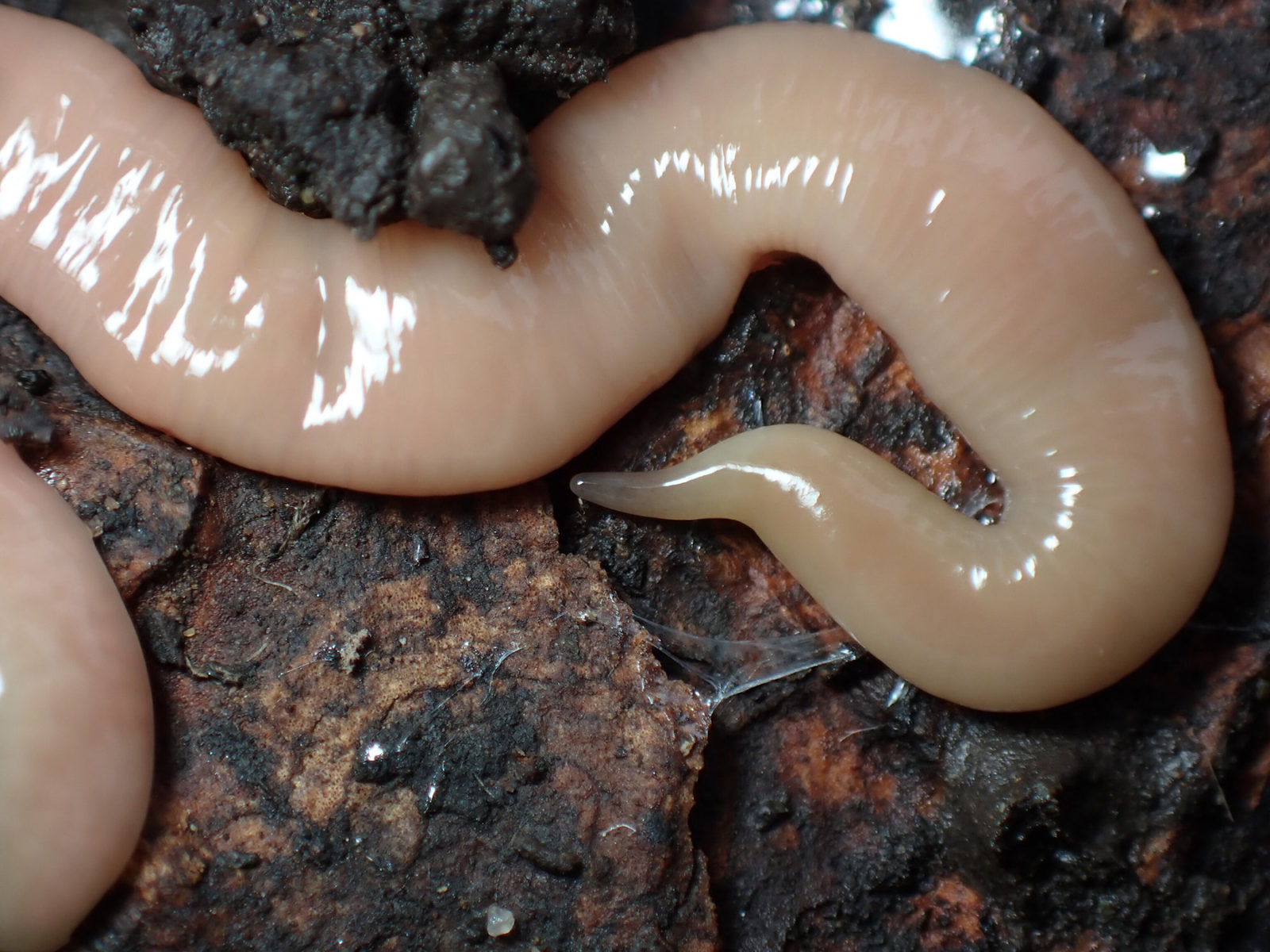
Who Decides?
The CDFA pest rating is the mechanism by which the state of California characterizes the potential of an organism to harm agriculture, the environment, or society. “Society” can include interference with home/urban gardening, human health, worker safety, food safety, jobs or cultural practices in California. The pest rating guides what official control measures are appropriate if the pest is encountered in California. New pest ratings are done through the completion of a California Pest Rating Proposal.
“No land planarians have recently been given an official pest rating. However, submissions of land planarians to the laboratory receive a provisional pest rating based on their apparent risk to the state,” Beuke said.
The CDFA also maintains a pest hotline for the public to report potential new invasive species. Specimens collected by county biologists are sent to CDFA‘s laboratory. “It’ll be up to us to decide what to do,” said Beucke. “We don’t provide treatment recommendations without knowing the exact species. Morphology would be used in case it might be something more easily identified, like Bipallium kewense. Very likely, DNA analysis would then be done. That might not be conclusive, however, as the DNA of the prey may be amplified and sequenced instead of the planarian.”
Beucke and academic researchers agree that more work is needed on land planarian biology and taxonomy. “If no one is working on it, you don’t know what risk it poses,” said Beucke.
“Although the invasion has apparently accelerated and worsened in recent years, our present knowledge is still limited,” wrote Sluys. “The time is ripe for biologists to unravel the diversity, ecology, and natural history of land flatworms, so that the environmental implications of their spread may be understood and curbed.”

